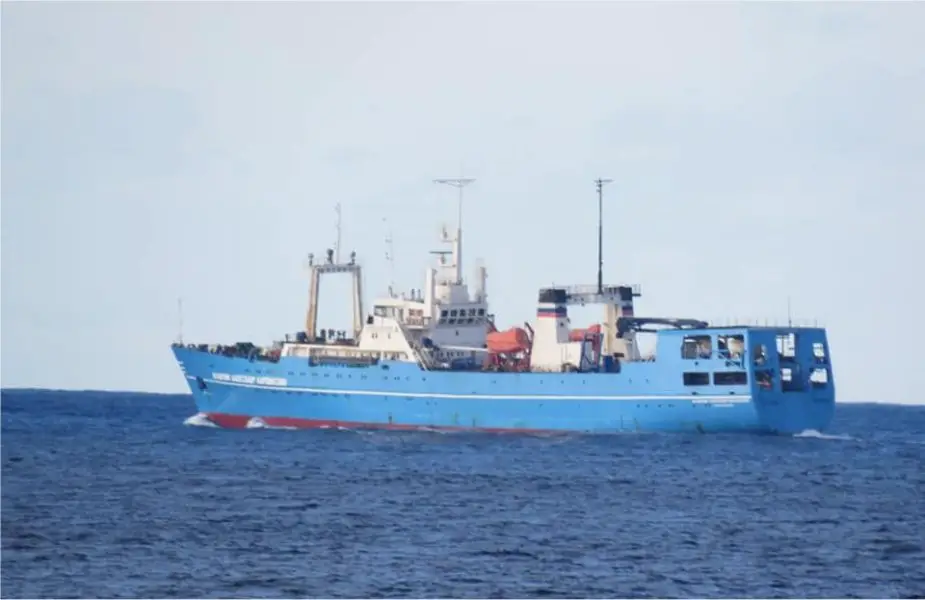Breaking news
Portugal Navy tracks Russian oceanographic research vessel Akademik Aleksandr Karpinskiy.
According to a tweet published by Ryan Chan on January 8, 2023, the João Coutinho-class corvette NRP António Enes has tracked the Russian oceanographic research vessel Akademik Aleksandr Karpinskiy.
Follow Navy Recognition on Google News at this link
 Russian oceanographic research vessel Akademik Aleksandr Karpinskiy. (Picture source: Portuguese Navy)
Russian oceanographic research vessel Akademik Aleksandr Karpinskiy. (Picture source: Portuguese Navy)
The João Coutinho-class corvettes were a series of warships built for the Portuguese Navy for service in Portugal's African and Indian colonies. Six ships were built; the first three ships were built by Blohm & Voss and the remaining three by Empresa Nacional Bazán. The ships were launched in 1970 and 1971.
The João Coutinho class were designed in Portugal by naval engineer Rogério de Oliveira and were initially rated as frigates measuring 84.6 metres (277 ft 7 in) long overall and 81.0 m (265 ft 9 in) between perpendiculars with a beam of 10.3 m (33 ft 10 in) and a draught of 3.3 m (10 ft 10 in).
The ships had a standard displacement of 1,252 tonnes (1,232 long tons) and 1,401 t (1,379 long tons) at full load. The ships were powered by two OEW-Pielstick 12 PC2 2 V400 diesel engines turning two shafts creating 7,870 kilowatts (10,560 bhp).
This provided the vessels with a maximum speed of 24.4 knots (45.2 km/h; 28.1 mph). They had a range of 5,000 nautical miles (9,300 km; 5,800 mi) at 18 knots (33 km/h; 21 mph) and 5,900 nmi (10,900 km; 6,800 mi) at 8 knots (15 km/h; 9.2 mph).
The João Coutinho class was initially armed with a twin 3-inch (76 mm)/50 calibre Mk 33 dual-purpose gun mount and a twin 40-millimetre (1.6 in)/L70 Bofors gun mount for anti-aircraft defence. The ships also mounted a Mk 10 Hedgehog anti-submarine (ASW) mortar, two Mk 6 depth charge projectors and two Mk 9 depth charge racks.
The vessels had an initial complement of 93 including 9 officers and had accommodations for 34 Marines. As equipment was removed, the number of personnel on the ships was reduced by 23.





























